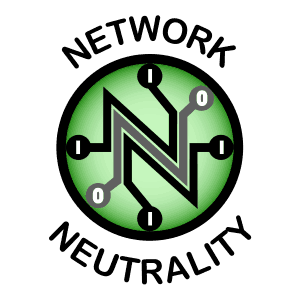Privacy Canada is community-supported. We may earn a commission when make a purchase through one of our links. Learn more.
Net Neutrality in Canada

Net neutrality is one of the most critical landscapes being fought in political circles across the world. It has the potential to affect commerce, privacy, and communications across many of the digital tools and avenues we use every day.
But perhaps because net neutrality is so important, every country has a different approach to the issue and, it seems, is coming up with different conclusions, though these are always in flux.
This guide is a hub for resources about net neutrality and how it affects Canada. Below, you’ll find a history of net neutrality and its developments within Canada as well as several recent news stories and government and official resources you can use to better understand the motions discussed.
The Internet Economic and Regulatory Landscape in Canada
To fully understand net neutrality and all of its implications, effects, and consequences, we first have to examine the role of the Internet and telecommunications as a whole in Canada and across the world.

The Internet is something that doesn’t need to be explained outright; we already know what it is and what it provides. But very few people know where the Internet comes from and how it provides its myriad services and products to homes and businesses across Canada and beyond.
The Internet is primarily provided to the vast majority of consumers through the efforts of Internet service providers, or ISPs. Internet service providers, also known as telecommunications common carriers, are people – though most often companies and organizations – who own and/or operate transmission facilities and associated infrastructure required for the transmission of telecommunications.
Telecommunications, likewise, is a catchall term referring to the emission, reception, or transmission of data or intelligence by radio, wire, cable, or any other electromagnetic system. The Internet, of course, is classified as a form of telecommunications.
The Internet is, therefore, provided by ISPs, which are never individuals and are instead large corporations that lease out access to the Internet using their infrastructure, which can range from the cables necessary to connect a home to the Internet to the satellite itself. Naturally, this gives ISPs a tremendous amount of economic power, especially in the modern era.
The House of Commons of Canada affirmed that telecommunications currently play an essential role in how Canada operates and how its identity and sovereignty are maintained.

In other words, the Internet is essential not just for daily business or interpersonal communication but also for matters of national security. It’s a service for the public good on the same level as water access or energy distribution. It’s not just a luxury.
Furthermore, the House of Commons dictated in the Telecommunications Act that Canadian telecommunications policies must focus on the following objectives:
- Facilitation of orderly development through Canada have a reliable telecommunication system to strengthen the economic and social aspects of the country
- Rendering consistent and affordable telecommunications services that are accessible to Canadians across all of its regions and in both urban and rural areas
- Enhancement of the efficiency and competitiveness of Canadian telecommunications relative to international and national levels
- Promotion of control and ownership of Canadian ISPs or carriers by Canadian citizens
- Promotion of the use of Canadian transmission facilities for telecommunications within the country and between Canada and outside points
- Fostering of increased reliance on telecommunications and associated market forces as well as proper regulation to ensure that such a marketplace is fair for both the consumer and the carrier providers
- Stimulation of telecommunications research and development in Canada to encourage new telecommunications patients
- Responsiveness to social and economic requirements for the users of said telecommunication services
- Contribution and increasing of the protection of users’ privacy
Thus, Canadian telecommunications providers must keep all of these above objectives in mind. But when ISPs have such a huge amount of power, they don’t always follow these rules to the letter.
What is Threatened Without Net Neutrality?
The primary purpose of any business (in this case, an ISP or telecommunications provider) is to make money. One of the main ways to make money is to acquire resources that a consumer wants and, to make even more profit, to make those resources exclusive to a single company. This is a very basic demonstration of monopolization.

ISPs, in recent years, have attempted to alter the Internet marketplace by changing the treatment of different types of Internet traffic in order to affect pricing and consumer usage.
Think of the Internet as coming from an ISP through a set of tubes. Different types of Internet traffic go through different tubes to your home. One tube might be for media downloads, another might be for Google alone, and a third might be for generic Internet web searches. Normally, Internet traffic is treated neutrally by an ISP. All traffic comes through all three tubes at the same rate/speed.
But ISPs, if they wanted to make more money, could artificially throttle one of the tubes – say, media – and require a user to pay more money if they wanted adequate Internet download speeds for their favorite media shows. In this way, they would still technically be providing the Internet to all users at the same price as other providers but offer “advantages” or “better download speeds” than before while charging more for those privileges.
Naturally, this is a massive step back for all citizens who have so far enjoyed equal download speeds across all types of traffic.
What is Net Neutrality?
Net neutrality, defined by the Canadian Radio-Television and Telecommunications Commission, is the “concept that all traffic on the Internet should be given equal treatment by Internet providers with little to no manipulation, interference, prioritization, discrimination, or preference given”. Put simply, net neutrality means that ISPs cannot charge you different amounts of money or provide the Internet at different rates based on the type of traffic you choose to use.

However, the above definition of net neutrality is not contained within the Telecommunications Act, which is why there has been such a drawn-out legislative battle about the rights of telecommunications users and ISPs.
The Net Neutrality Battle
The CRTC established to telecom regulatory policies to determine whether the Telecommunications Act needed to be updated to protect net neutrality or if net neutrality was technically being upheld already. The latter decision would, in theory, allow ISPs to continue altering traffic flow to their users in a gambit to make more money.
Three decisions were made:
- The first decision by the CRTC described that the Telecommunications Act clearly requires an ISP to increase its network capacity as much as reasonably possible when users experience traffic congestion. This congestion can be either out of the ISP’s control or due to their actions.
- The second decision involved the CRTC requiring mobile wireless service providers to stop giving their own mobile television services “an unfair advantage in the marketplace” by counting said services for less on a user’s data allowance. This essentially called for mobile wireless service providers to stop discriminating against the content their users consumed.
- The third decision by the CRTC reiterated the decision made in April 2017 that ISPs should treat all the data flowing through their networks equally. Otherwise, according to the CRTC, Internet service providers are influencing consumer choices and restricting access to content over the Internet. This is against the regulations outlined in the Telecommunications Act.
Overall, it was determined that the concept of net neutrality was both important but was currently adequately protected by the existing framework provided by the Telecommunications Act. Therefore, Internet access, as provided by ISPs, follows – at least on paper – the regulations described above. It is not legal for ISPs to discriminate based on traffic or any other metric when providing Internet access to consumers.

However, protecting net neutrality in Canada relies on the CRTC interpreting the current statutory provisions in the Telecommunications Act in the same way in the future. As new cases from ISPs and users emerge, new opportunities for different interpretations of the provisions will continually arise.
Net Neutrality as a Law
This has led to a push to officially add net neutrality as its own provision or concept into the Telecommunications Act. It is believed that this will make overturning net neutrality as a concept much more difficult and make it impossible for ISPs to find loopholes in the former rulings.

As of 6 December 2017, the Canada Research Chair in Internet and Ecommerce Law, Michael Geist, explained the currently held belief that that neutrality as a possibility of being enshrined in legislation but that current priorities are more focused on improving enforcement of the existing provisions in the Telecommunications Act.
The Executive Director of Telecommunications, Christopher Seidl, has also reiterated that net neutrality enforcement and protection remains a top priority for the CRTC. He also currently believes that net neutrality’s concepts and spirit are adequately protected by the provisions in the Telecommunications Act and wants to enforce the existing provisions more strictly.
Additionally, Seidl currently believes that the statutory provisions, which are necessarily broadly worded to allow for reliability over the long-term, are already proven to be good enough. He cautions that enshrining net neutrality in a more ironclad manner may accidentally cause a lack of flexibility in future cases or concerns.
Essentially, the current legislative tone in Canada regarding net neutrality is that it is important and must be enforced but is already adequately protected. While significant push remains to make net neutrality an explicit law or statutory provision in the existing Act, this is not currently a priority for the executives in charge of the CRTC at this time.
As of this time, the Standing Committee on Access to Information, Privacy, and Ethics have recommended that, “the government of consider considering enshrining the principle of net neutrality in the Telecommunications Act” in order to prevent any erosion of net neutrality’s principles.
How Does Net Neutrality Differ Between the US and Canada?
Despite their geographic proximity, the United States and Canada differ greatly on their current interpretations and approaches to the concept of net neutrality.

The United States’ communication laws and regulations are both implemented and enforced by the FCC, or the Federal Communications Commission. This is an independent government agency whose chairman, Ajit Pai, released a “Proposal to Restore Internet Freedom”.
This proposal, which was voted on in December 2017 by the SEC, requested that the government abandon regulatory frameworks implemented in 2015 to go back to previous standards.
Prior to 2015, the Internet in the United States was regulated as an information service, which necessitated a less strict approach to ISP discrimination and Internet provision. In other words, it was much more legal and easier for ISPs to discriminate based on traffic and charge different prices for different kinds of web use by their consumers. This changed during the Obama administration when the US government moved Internet services into a different category in their broader Communications Act.
The Internet became classified as a telecommunications service rather than an information service, which required that it be regulated with more rigorous standards. This regulation was much more in line with the regulation currently enjoyed by citizens of Canada thanks to the interpretations of the Telecommunications Act described above.
However, the FCC adopted Mr. Pai’s proposal in 2017. This restores the Internet in America to an information service as classified by the Communications Act. This allowed the Internet to be more lightly regulated and has opened avenues for potential exploitation by ISPs.

The reasoning for this change was reportedly to, “empower consumers as well as facilitate effective government oversight” as well as “spur competition and innovation that will benefit the consumers”. This framework will allegedly allow a more capitalist evolution of the Internet and ISP companies to take place, although the full ramifications of this change have not yet been seen.
Several members of the FCC vote did voice their dissent about the overall decision. As of now, no outright challenge or overturn has taken place.
Net Neutrality in the US vs Canada Summary
Thus, American ISPs are currently less well-regulated than Canadian ISPs. In the United States, the Internet is not classified as a telecommunications service but instead an information service, which allows certain types of discrimination on the parts of ISPs. This includes but is not limited to price discrimination, traffic discrimination, and area of service discrimination.

In Canada, the Internet is classified as a telecommunications service and is subject to the same regulations described in the original Telecommunications Act. This prevents discrimination from ISPs on the part of traffic or area. In other words, ISPs cannot charge different prices for different types of Internet usage or in different areas.
Both the FCC and the CRTC can pass rules regarding the regulation of telecommunications and information services without the approval of their respective Congress or Parliament. This does not necessarily mean that either body is apolitical. Instead, it frees those groups from having to make decisions based on the current ruling party.
However, both bodies are subject to certain degrees of government interference and oversight. While the FCC and CRTC are not controlled by the government, many officials in either organization are either directly or indirectly elected by the government. This does mean that some party politics cross over to their decisions.
However, the discussion about net neutrality is not yet over. There are many in Canada (particularly ISPs and their supporters) who wish to lighten the regulation surrounding the Internet, while there are many in America that are attempting to restore the 2015 regulations to their own Communications Act. Time will tell how this discussion and battle will end.
Related Read: What’s Going On With Net Neutrality in Canada?
Helpful Digital Privacy Tools
Recent Net Neutrality News
Oakville MP John Oliver Protects Net Neutrality

The Canadian House of Commons voted unanimously on May 23 to adopt a new piece of net neutrality legislation called Motion M-168. This motion called on the Canadian government to strengthen and protect Internet openness by using net neutrality as one of its guiding principles in the upcoming review of its telecommunications and broadcasting acts.
This news arrived just after the United States’ FCC announcement that its net neutrality rules will expire on June 11, which would give ISPs more power for consumer internet access discrimination.
MP John Oliver described his belief that net neutrality is important in order to facilitate success among young digital entrepreneurs. In addition, support was gained by many across the Canadian territories, as net neutrality seen by many as a freedom that should not be taken from Canadian citizens.This occurred after telecommunications companies argued for the repeal of open-Internet rules that were established in 2015 under former Pres. Barack Obama.
Why Canada’s Net Neutrality Fight Isn’t as Fierce as the US Fight
The United States and its policymakers have been fighting over 15 years about whether to distinguish the Internet as a utility or as an information service. The latter categorization would require more stringent regulation on behalf of the government and prevent ISPs from discriminating based on the content that users consume. The former categorization will result in less net neutrality.
The most recent developments in the United States were in 2015 when Obama’s government implemented more strict net neutrality rules, and in 2018, when the FCC overturn those rules and returned to a lighter hand of regulation.
However, Canada’s fight for net neutrality is not as controversial or fierce because the CRTC, the Canadian counterpart to the FCC, is much less partisan. In other words, the CRTC is less affected by party politics and is a more citizen-focused organization, though some lobbying does occur. On the flip side, the FCC is strongly affected by the ruling political party in the United States.
Why Canadians Should Care About The US’ Net Neutrality Changes
In 2018, the United States’ FCC, which regulates its communication organizations and services, voted to repeal former laws under the Obama administration that dictated harsher regulation for ISPs regarding traffic discrimination. This has resulted in an effective repeal of net neutrality in the United States.
The CRTC, Canada’s counterpart to the FCC, has said that it believes net neutrality is still important and will work to uphold it for the citizens of Canada. But some believe that the decision in the US has set a dangerous precedent that could crop up in Canada when the next boat about net neutrality interpretation comes around.
Internet Activist Advocates for Enshrining Net Neutrality in Law
Although Prime Minister Justin Trudeau has outwardly voiced his support for net neutrality, several Internet activists have claimed that the concept should be enshrined in federal law – that is, made into a law or provision of the existing Telecommunications Act – rather than be left “between the margins” with the existing provisions.

This is partially because of the potential for precedent-setting that the US’ FCC net neutrality overturn has caused in the minds of many Canadians. While Canada is currently a haven for net neutrality proponents, the possibility for the law changing is always present, especially for something as ambiguous as net neutrality.
Internet activists claimed that making the law more explicit will increase the difficulty that any possible overturn motion will face.
Canadian Parliament Votes to Protect Net Neutrality Nationwide
Although the United States’ FCC has recently voted to repeal net neutrality, the Canadian Parliament has voted to shore up its own net neutrality legislation. While it is not a formal bill enshrining net neutrality into the law, it is a strong step toward establishing a net neutrality law in its own right.
This motion, M-168, is meant to encourage net neutrality protection and explicit writing. Parliament believes that it will lay a foundation for the inclusion of net neutrality protections in future telecommunications and broadcasting legislative infrastructure.
Net Neutrality Resources
- Report of the Standing Committee on Access to Information, Privacy, and Ethics – The Protection of Net Neutrality in Canada
- Summary of US States’ Net Neutrality 2019 Legislation
- FCC’s “Restoring Internet Freedom”
- FreedomHouse Internet Canada Freedom Score
- Canadian Ratio-Television and Telecommunications Commission – Support of Net Neutrality
- CRTC – Internet Traffic Management Practices
- Research Notes on Net Neutrality from the Canadian Parliament




